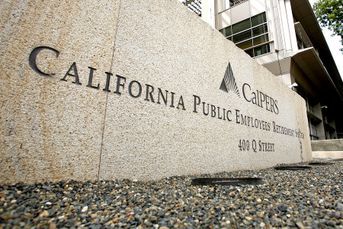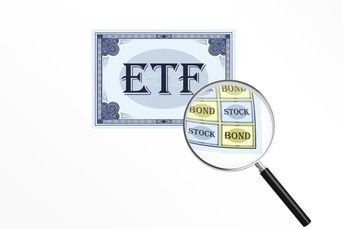Money manager 1Q AUM, profits, inflows strong
Most major publicly traded money managers saw a boost in their assets under management and their profits in the first quarter, driven by a robust equities market as well as positive inflows
Most major publicly traded money managers saw a boost in their assets under management and their profits in the first quarter, driven by a robust equities market as well as positive inflows.
Total first-quarter assets under management for the 13 publicly traded managers that reported as of April 29 were up 4% from the fourth quarter of 2010, according to a research report from The Goldman Sachs Group Inc.
The winners and losers among publicly traded money managers are becoming more clearly defined as the market environment becomes less volatile and companies stand on their investment track records, said Michael Kim, an analyst at Sandler O’Neill + Partners LP.
Among the winners in terms of asset growth, he counts Affiliated Managers Group Inc. and Franklin Resources Inc., which reported first-quarter AUM growth of 6.2% and 5%, respectively.
Both companies had even more dramatic AUM increases when looking at the one-year period ended March 31, with 30.7% for AMG and 20% for Franklin.
The two companies’ increases have been driven by positive performance across various asset groups, Mr. Kim said.
On the other hand, he ranked Janus Capital Group Inc. among the losers because of poor-performing equity strategies and funds.
“Janus has had widespread performance problems,” Mr. Kim said.
The company suffered net outflows of $2.7 billion for the first quarter, the seventh straight quarter of net outflows.
On a positive note overall, senior officials at money management firms and analysts said that investors were taking on more risk and thus investing in higher-fee asset classes such as active equities and alternatives during the first quarter.
The equity market rebounds have set the stage for continued growth in equity inflows for the second quarter and beyond, according to Credit Suisse Group Inc. analyst Craig Siegenthaler.
“We expect the short-term de-risking phase to transition back into a multiyear re-risking cycle, given the near-term rebound in global equities,” he said.
Those moves help money managers because active equity strategies command higher fees than passive investments.
“There are two camps: retail investors who are too afraid to do something and institutional investors who have to do something,” Goldman Sachs analyst Marc Irizarry said.
Institutional investors are more willing this year than last to put their money into riskier asset groups to try to make up for their previous losses, he said.
That particularly benefited AMG, with its strong specialties in global emerging-markets equities and alternatives, Mr. Irizarry said.
Indeed, AMG attributed 70% of its earnings to those two categories.
Higher inflows led to big gains in net income at AMG and other money managers in the first quarter.
AMG’s net income of $39.1 million in the first quarter was up 123% from a year earlier. Franklin reported a 41% increase from a year earlier, while BlackRock Inc.’s net income rose 34% year over year.
BlackRock chairman and chief executive Laurence D. Fink said during an April 21 conference call with analysts that investors have begun to “re-risk,” noting that $2 billion in net inflows was plowed into single-strategy and multistrategy hedge funds and real estate.
Money managers won’t get the benefit of unbridled flows into these higher-fee asset classes, because “caution” is still the keyword, said Robert Lee, an analyst with Keefe Bruyette & Woods Inc.
“Institutional investors have to take some risk, but they are not necessarily going to buy aggressive growth funds,” he said.
Overall inflows could slow in coming months because investors often make investment decisions in the first quarter, leading to higher inflows in that quarter, Mr. Lee said.
“If you look historically, the first quarter tends to be stronger than other quarters. There tends to be some seasonality,” Mr. Lee said.
Ultimately, investors who expect that continued inflows will be a boon for money managers’ bottom lines could be disappointed, he said.
“Unless the market can keep marching higher, it’s hard to make a case that everything is going to accelerate,” Mr. Lee said.
Regardless, money managers have decided to use the increased profits they have earned so far to make capital investments, said Barclays Capital analyst Roger Freeman.
Capital is being spent on new products, technology projects, international expansion, advertising and marketing, all parts of efforts to remain competitive, he said.
“Money managers want to make sure they are well-positioned,” Mr. Freeman said.
AMG is one of the companies that is directing capital to international expansion.
During a conference call, chief executive Sean Healey credited the increase in inflows at AMG to its overseas expansion efforts.
Mr. Fink didn’t disclose how much it will cost his company but told analysts during the conference call that BlackRock plans to build brand recognition worldwide.
“This is going to be a big and aggressive campaign over the next five years,” he said. “We believe this will demonstrate the growth of the platform, and it will allow us to continue to grow worldwide.”
MARKET GAINS
BlackRock, the world’s largest money manager, had net outflows in the first quarter.
Although its assets under management increased $87.5 billion between the fourth quarter of 2010 and the first quarter of 2011, that was due to market gains of $100 billion. The company had net outflows of just more than $12 billion.
Analysts downplayed BlackRock’s outflows, noting that they were primarily low-fee cash management products such as money markets. BlackRock reported in its first-quarter report that it had net withdrawals of $24 billion from cash management products.
What is particularly positive for BlackRock is that outflows related to the company’s 2009 acquisition of Barclays Global Investors are easing, Mr. Siegenthaler said.
“It’s happening several quarters earlier than we thought,” he said.
Those outflows, which occurred because investors didn’t want their assets to be too concentrated with one manager following the merger, fell 53% to $18.4 billion during the first quarter, Mr. Siegenthaler said.
Lower-fee indexed assets continued to dominate the merger-related outflows, accounting for $10.8 billion of the $18.4 billion, BlackRock’s financials show.
The outflows are expected to decline further in future quarters, and the company won’t need to continue to break them out, Mr. Fink said during the conference call.
“We believe this is principally over. We are forecasting and telling you that there is in our pipeline another $9 billion [of merger-related outflows], but this reporting is over,” he said.
“We believe we can look forward to growth now, and we don’t see any of the concentration issues that we had before.”
BlackRock wasn’t the only money manager to have a strong quarter despite flow issues.
T. Rowe Price Group Inc. reported $5.8 billion in first-quarter inflows, down 16% from the fourth quarter.
The reduced inflows came despite $194.6 million in net income for the money manager for the first quarter, up 27% from a year earlier.
Invesco Ltd. also had flow issues.
The company reported net income of $177.5 million in the first quarter, up 87% from a year earlier. That dramatic increase was partly fueled by Invesco’s purchase of Morgan Stanley’s retail-asset-management business last June.
Invesco had $6.6 billion in net inflows in the first quarter, but analysts were concerned because $2.8 billion in outflows came from higher-fee equity products in the quarter.
During a conference call with investors, Invesco chief financial officer Loren Starr attributed the equity outflows to underperformance by some of the company’s equity mutual funds.
Some of the underperforming funds are in the process of being merged with better-performing ones, which should lead to a lower redemption rate, he said.
Analysts said that Invesco must reverse the negative equity flows.
Allegations of overcharging for foreign-exchange trades have swirled around two major asset managers reporting in the first quarter, State Street Corp. and The Bank of New York Mellon Corp.
The companies are being sued by various states and pension systems that allege that they were defrauded by being charged higher-than- promised rates. Officials at both banks have denied wrongdoing.
The charges seem to be having little immediate impact on the institutions’ financial picture, and both said that foreign-currency-trading revenue is a small part of overall revenue.
The first quarter was very strong for State Street and BNY Mellon.
At State Street, fee revenue overall was $1.79 billion as of March 31, a 16% increase from a year earlier. BNY Mellon’s first-quarter revenue was $2.83 billion, a 12% increase.
Randy Diamond is a reporter for sister publication Pensions & Investments.
Learn more about reprints and licensing for this article.






